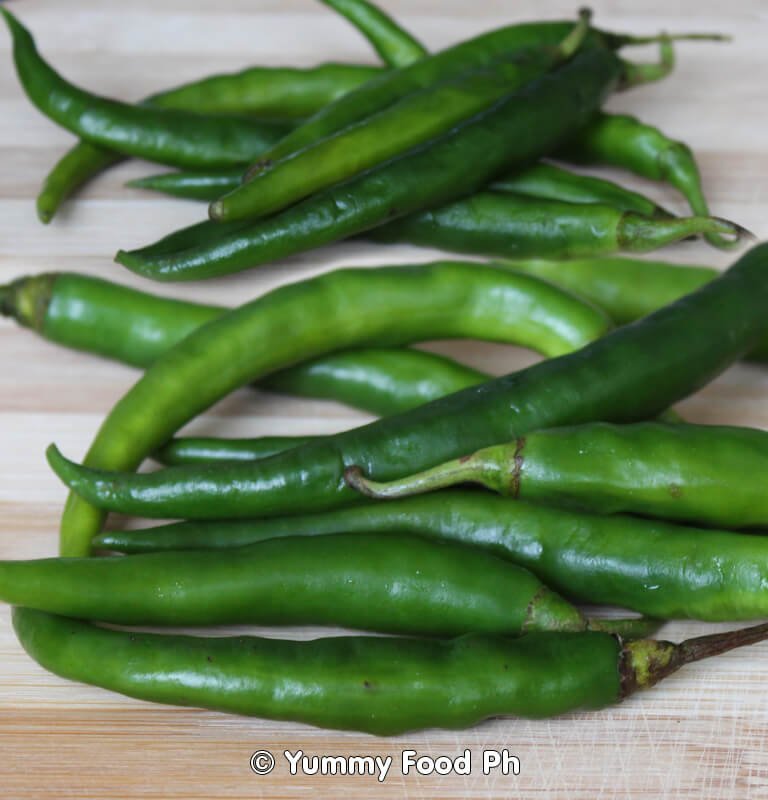Green chili peppers come in a wide variety of sizes and shapes, from slightly curved to straight, and each kind might have a distinct amount of spiciness.
Green Chili Peppers: A Fiery and Flavorful Staple
Introduction
Green chili peppers are a diverse and vibrant group of peppers that vary widely in size, shape, and heat intensity. These peppers are harvested while still immature, giving them their characteristic green color, which can range from pale lime to deep forest green. Unlike their ripe red, yellow, or orange counterparts, green chilies offer a distinct fresh, grassy flavor with varying degrees of pungency. They are a fundamental ingredient in cuisines worldwide, prized for their ability to add both heat and depth to dishes. Beyond their culinary uses, green chilies are packed with nutrients and bioactive compounds like capsaicin, which provide numerous health benefits.
Botanical Characteristics
Green chili peppers belong to the Capsicum genus, which includes both sweet and hot pepper varieties. Their physical characteristics can vary significantly depending on the cultivar:
- Shape & Size: They may be short and stubby (like jalapeños), long and slender (like cayenne peppers), or slightly curved (like serranos). Some varieties, such as Thai chilies, are small and narrow, while others, like poblano peppers, are broader and heart-shaped.
- Texture & Appearance: The skin can be smooth and glossy or wrinkled and matte. The flesh beneath the skin ranges from thin and delicate (as in Thai chilies) to thick and meaty (as in Anaheim peppers).
- Internal Structure: When sliced open, green chilies reveal a hollow central cavity lined with flat, circular seeds. These seeds, along with the white pith (placenta), contain the highest concentration of capsaicin, the compound responsible for their heat.
Flavor Profile & Heat Levels
Green chilies offer a complex flavor profile that combines:
- Fresh, vegetal notes – A crisp, slightly bitter, grassy taste characteristic of unripe peppers.
- Bright acidity – A tangy sharpness that enhances savory dishes.
- Pungent heat – Ranging from mild (e.g., poblano, 1,000–2,000 Scoville Heat Units) to extremely spicy (e.g., green habanero, 100,000–350,000 SHU).
The Scoville Scale measures a pepper’s spiciness based on its capsaicin content. For comparison:
- Bell pepper – 0 SHU (no heat)
- Jalapeño – 2,500–8,000 SHU
- Serrano – 10,000–23,000 SHU
- Bird’s eye chili – 50,000–100,000 SHU
Culinary Uses Across Cuisines
Green chilies are a cornerstone ingredient in many global cuisines, used in both fresh and cooked forms:
- Mexican & Latin American Cuisine
- Jalapeños: Stuffed (chiles rellenos), pickled, or diced in salsas.
- Poblanos: Roasted for chiles en nogada or blended into mole sauce.
- Asian Cooking
- Thai green chilies: Pounded into curry pastes or served fresh with noodle dishes.
- Indian green chilies: Chopped into chutneys, curries, or pakoras (fritters).
- Mediterranean & Middle Eastern Dishes
- Shishito peppers: Blistered and served as a tapas dish.
- Green cayenne peppers: Fermented into hot sauces like zhoug (Yemeni cilantro-chili paste).
- Pickling & Preserving
- Green chilies are often pickled in vinegar (e.g., escabeche) or dried for spice blends.
Nutritional & Medicinal Benefits
Despite their small size, green chilies are nutrient-dense and offer several health advantages:
- Rich in Vitamin C: Supports immunity and skin health.
- Capsaicin Benefits:
- Pain Relief: Used in topical creams for arthritis and nerve pain.
- Metabolism Boost: May aid weight loss by increasing fat oxidation.
- Cardiovascular Health: Helps reduce blood pressure and improve circulation.
- Antioxidant Properties: Combats oxidative stress and inflammation.
Cultivation & Harvesting
- Growing Conditions: Thrives in warm climates with well-drained soil.
- Harvesting: Picked while still green; if left to ripen, they turn red, yellow, or orange.
- Storage: Best kept in a paper bag in the fridge for up to two weeks.
Fun Facts & Trivia
- The world’s hottest green chili is the unripe Carolina Reaper, measuring over 1,500,000 SHU.
- In Korean culture, green chilies are a symbol of resilience due to their ability to grow in harsh conditions.
These ingredients are frequently used in our culinary preparations.
Conclusion
Green chili peppers are far more than just a source of heat—they are a dynamic ingredient that enhances flavor, nutrition, and cultural culinary traditions. Whether you prefer the mild tang of a poblano or the fiery punch of a Thai bird’s eye chili, these versatile peppers continue to spice up dishes and promote wellness across the globe.
Visit us on YouTube: Yummy Food PH

